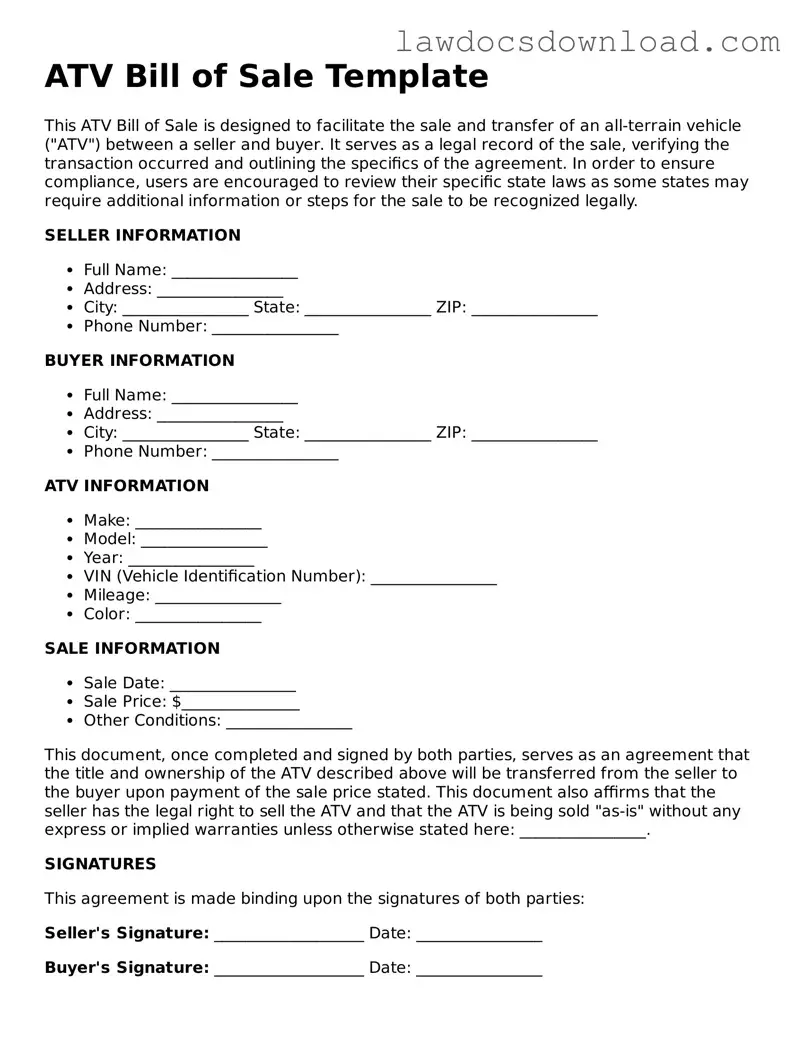The ATV Bill of Sale form is closely related to a Vehicle Bill of Sale, as both serve as legal documents that finalize the sale and conveyance of a piece of property from a seller to a buyer. Specifically, a Vehicle Bill of Sale records the transaction of a car, motorcycle, or similar vehicle, ensuring that the details of the sale, including the identities of the parties involved, the sale date, and the financial terms, are clearly documented. This is quite similar to the ATV Bill of Sale, which serves a parallel purpose but is focused on all-terrain vehicles, highlighting the item's specifics, the parties' agreement, and the vehicle's condition at the time of sale.
A General Bill of Sale shares similarities with an ATV Bill of Sale, as it is used to document the sale of personal property items. This could range from electronics to furniture, and it functions to provide proof of purchase and transfer of ownership. The primary difference lies in the type of items it covers; whereas the ATV Bill of Sale is specific to all-terrain vehicles, the General Bill of Sale has a broader application. Nonetheless, both documents serve to legitimize the transaction and protect both parties by detailing the item sold, sale price, and conditions of sale.
The Boat Bill of Sale is another document that mirrors the function and purpose of the ATV Bill of Sale, but focuses on the sale of watercraft. Like the ATV Bill of Sale, it records the specifics of the transaction between the seller and the buyer, including the sale price, a description of the boat, and any additional terms or warranties. What’s crucial is that both documents ensure the legal transfer of ownership, providing a record that can be used for registration, taxation, and proof of ownership purposes.
Finally, the Firearm Bill of Sale is akin to an ATV Bill of Sale in its role and necessity in documenting the sale and transfer of ownership of a firearm from one party to another. Both documents include vital details such as the make, model, and serial number (for firearms) or vehicle identification number (VIN) for ATVs, alongside the personal details of the buyer and seller, sale amount, and signatures. The critical difference is the type of item being sold, yet the underlying purpose of facilitating a secure and acknowledged transaction while adhering to legal requirements remains fundamental to both.
